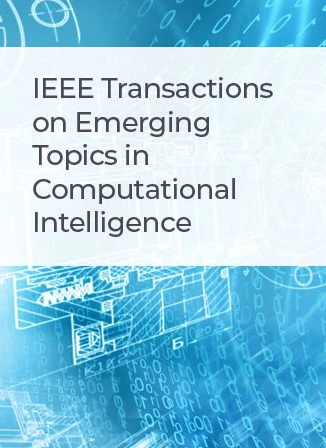SR-ABR: Super Resolution Integrated ABR Algorithm for Cloud-Based Video Streaming
IF 5.3
3区 计算机科学
Q1 COMPUTER SCIENCE, ARTIFICIAL INTELLIGENCE
IEEE Transactions on Emerging Topics in Computational Intelligence
Pub Date : 2024-08-28
DOI:10.1109/TETCI.2024.3446449
引用次数: 0
Abstract
Super-resolution is a promising solution to improve the quality of experience (QoE) for cloud-based video streaming when the network resources between clients and the cloud vendors become scarce. Specifically, the received video can be enhanced with a trained super-resolution model running on the client-side. However, all the existing solutions ignore the content-induced performance variability of Super-Resolution Deep Neural Network (SR-DNN) models, which means the same super-resolution models have different enhancement effects on the different parts of videos because of video content variation. That leads to unreasonable bitrate selection, resulting in low video QoE, e.g., low bitrate, rebuffering, or video quality jitters. Thus, in this paper, we propose SR-ABR, a super-resolution integrated adaptive bitrate (ABR) algorithm, which considers the content-induced performance variability of SR-DNNs into the bitrate decision process. Due to complex network conditions and video content, SR-ABR adopts deep reinforcement learning (DRL) to select future bitrate for adapting to a wide range of environments. Moreover, to utilize the content-induced performance variability of SR-DNNs efficiently, we first define the performance variability of SR-DNNs over different video content, and then use a 2D convolution kernel to distill the features of the performance variability of the SR-DNNs to a short future video segment (several chunks) as part of the inputs. We compare SR-ABR with the related state-of-the-art works using trace-driven simulation under various real-world traces. The experiments show that SR-ABR outperforms the best state-of-the-art work NAS with the gain in average QoE of 4.3%–46.2% and 18.9%–42.1% under FCC and 3G/HSDPA network traces, respectively.当客户端和云供应商之间的网络资源变得稀缺时,超分辨率是提高基于云的视频流体验质量(QoE)的一种很有前途的解决方案。具体来说,接收到的视频可以通过在客户端运行的训练有素的超分辨率模型进行增强。然而,现有的所有解决方案都忽略了超分辨率深度神经网络(SR-DNN)模型的性能变异性,即相同的超分辨率模型对视频的不同部分会因为视频内容的变化而产生不同的增强效果。这导致不合理的比特率选择,导致低视频QoE,例如,低比特率,重新缓冲,或视频质量抖动。因此,在本文中,我们提出了一种超分辨率集成自适应比特率(ABR)算法SR-ABR,该算法将sr - dnn的内容引起的性能变化考虑到比特率决策过程中。由于复杂的网络条件和视频内容,SR-ABR采用深度强化学习(deep reinforcement learning, DRL)来选择未来比特率,以适应广泛的环境。此外,为了有效地利用sr - dnn的内容诱导的性能可变性,我们首先定义了sr - dnn在不同视频内容上的性能可变性,然后使用二维卷积核将sr - dnn的性能可变性特征提取到一个短的未来视频片段(几个块)作为输入的一部分。我们将SR-ABR与相关的最先进的作品进行比较,使用各种真实世界轨迹下的轨迹驱动仿真。实验表明,在FCC和3G/HSDPA网络走线下,SR-ABR的平均QoE增益分别为4.3% ~ 46.2%和18.9% ~ 42.1%,优于最先进的工作NAS。
本文章由计算机程序翻译,如有差异,请以英文原文为准。
求助全文
约1分钟内获得全文
求助全文
来源期刊

IEEE Transactions on Emerging Topics in Computational Intelligence
Mathematics-Control and Optimization
CiteScore
10.30
自引率
7.50%
发文量
147
期刊介绍:
The IEEE Transactions on Emerging Topics in Computational Intelligence (TETCI) publishes original articles on emerging aspects of computational intelligence, including theory, applications, and surveys.
TETCI is an electronics only publication. TETCI publishes six issues per year.
Authors are encouraged to submit manuscripts in any emerging topic in computational intelligence, especially nature-inspired computing topics not covered by other IEEE Computational Intelligence Society journals. A few such illustrative examples are glial cell networks, computational neuroscience, Brain Computer Interface, ambient intelligence, non-fuzzy computing with words, artificial life, cultural learning, artificial endocrine networks, social reasoning, artificial hormone networks, computational intelligence for the IoT and Smart-X technologies.
 求助内容:
求助内容: 应助结果提醒方式:
应助结果提醒方式:


